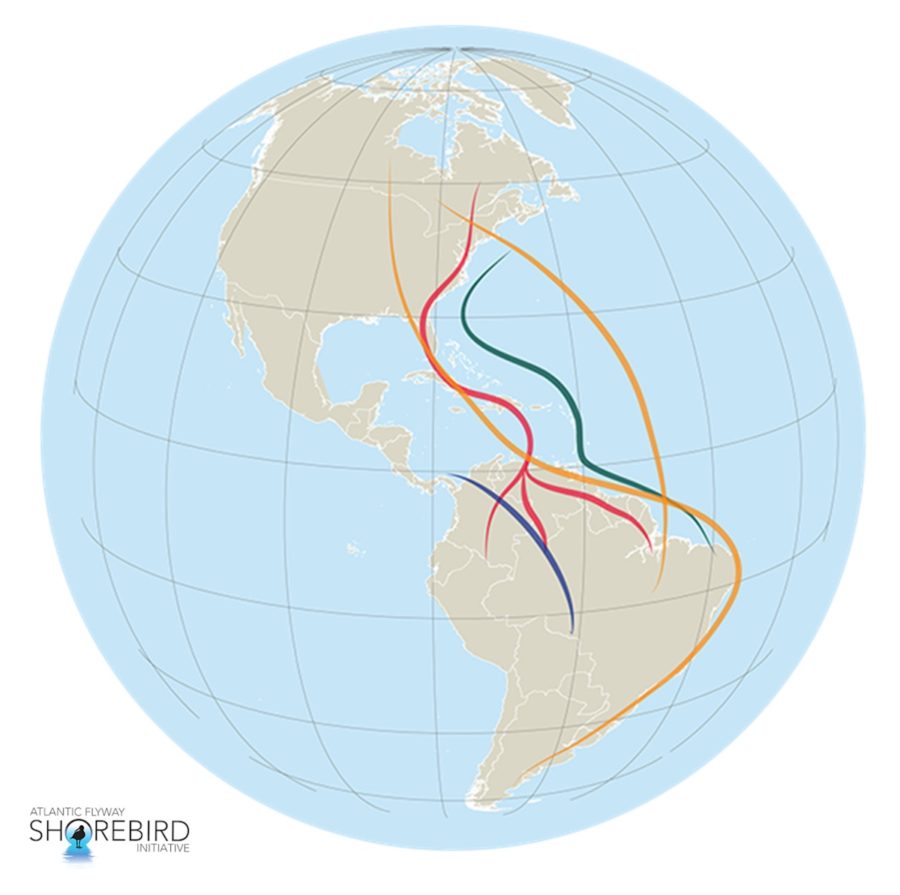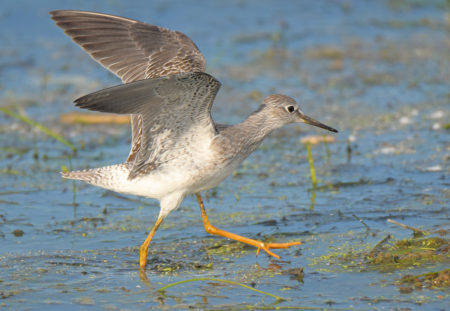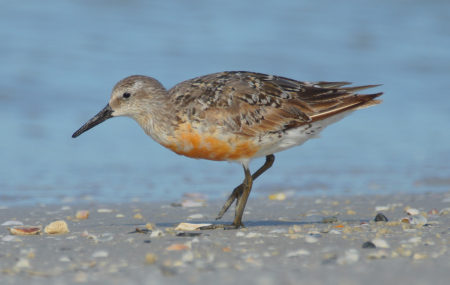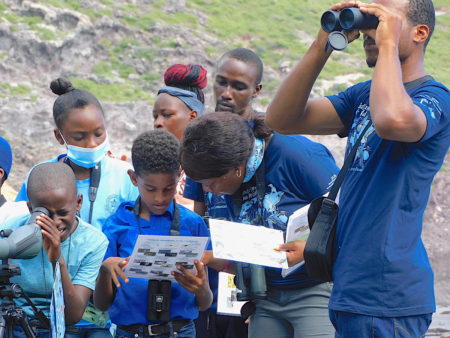On World Shorebirds Day, Benoit Laliberté, a Shorebird Biologist with the Canadian Wildlife Service, tells us about the connections between the shorebirds that breed in Canada and the Caribbean and shares his thoughts on the main conservation issues for shorebirds in the Caribbean.
Shorebirds are fascinating. Given their size, it can be hard to even try to imagine the incredible journeys they accomplish every year on migration. For example, Red Knots can fly more than 30,000 km annually! It is amazing that these birds weigh only 180g but can fly from the Canadian tundra to the tip of Tierra del Fuego, and back, within 10 months. Because these birds travel to (and stop over in) so many different countries, their conservation requires us to take a multi-national approach.
Enjoy our short video, created in honor of World Shorebirds Day 2021!
Conservation Across Borders
How do we address this cross-border challenge? To do this, the shorebird conservation community has developed flyway conservation initiatives. Flyways are major routes, like ‘migration highways,’ that shorebirds use to travel from breeding to wintering areas and back. Here in the Americas they are: the Atlantic, the Pacific and the Mid-continental Flyways. The Caribbean islands are located in the Atlantic Flyway

The Atlantic Flyway Shorebird Initiative (AFSI) aims to conserve and protect the 30 or so species of shorebirds that use this route. These birds range from the small Plovers and Sandpipers to the large Whimbrels and Godwits. Unfortunately, the ongoing, ceaseless deterioration of our planet has led to large declines in shorebird populations. Across all shorebird species that occur in Canada – most of which also travel to the Caribbean – this decrease in numbers is estimated at -40% since 1970. However, the drop is much steeper for some species, like the Red Knot (-70% since 2000) or the Lesser Yellowlegs (-65% since 1970). In fact, many shorebirds are at the top of the list of ‘species of conservation concern’ worldwide.
Why are Shorebirds in Trouble?

The main threats to shorebirds in the Atlantic Flyway are hunting, predators, human disturbance, habitat loss and change, and climate change. Most of these occur in the Caribbean, but the threats of hunting, habitat loss, and climate change are the most relevant for the region.
We know that shorebirds are hunted on Barbados, Martinique and Guadeloupe. If we are able to address the threat of hunting, we in the conservation community can make rapid gains. This does not mean that hunting should be banned. In Canada and the United States, we have more than 100 years of experience working with hunters to develop sustainable hunting policies and working with the hunting community to conserve and restore bird habitats. We need to focus on raising awareness about this threat, measuring its impacts, and developing sustainable hunting policies that will allow birds to thrive and hunters to pursue their hobby – now, and in the future.
Habitat loss is more difficult for us to tackle. Shorebirds use a variety of habitats, whether it is beaches, intertidal sandflats and mudflats, mangroves, or salt, brackish, and freshwater ponds. This means that multiple types of developments and changes, for example those that alter the wetland’s hydrology, can threaten the shorebirds’ homes. Secondly, changes to habitat can ‘creep’ in slowly, with both human developments and the impacts of climate change gradually changing the places where shorebirds live – or removing those places altogether. Damaged habitats can take a long time to recover, so it is imperative to ensure that those that are still relatively intact are conserved for future generations.
What Can We Do the Help Shorebirds?

We need to make sure that key places for shorebirds are identified. To do this we need to carry out surveys such as the Caribbean Waterbird Census (CWC). Information from these surveys can help identify and increase protection for vital shorebird habitats. Local communities have a key role to play. Anyone can carry out CWC surveys! BirdsCaribbean has provided training for people across the region on Shorebird ID and how to carry out surveys, both online and in person.
Shorebirds need safe habitats with clean water and abundant invertebrate food, when they stop during migration. As climate change increases the frequency and severity of hurricanes, it is possible that the Caribbean will play a bigger role for migrating shorebirds. Shorebirds are migrating through the region during the peak hurricane season. The wetland habitats on Caribbean islands should serve as refuge for these birds. This means local initiatives to restore and clean-up habitats can help shorebirds. Recent projects to restore mangroves in Puerto Rico and increase awareness of shorebirds in Montserrat, through community initiatives like beach clean-ups, will help both shorebirds and people!
Curbing the decline of shorebird populations needs global cooperation. It might seem like an overwhelming task, but every little step helps. To ensure future generations are in a good position to continue the work we start today, we need to spread the word. As a child, I was fortunate to get involved in activities that got me interested in nature and birds, and this inspired me to pursue a career in conserving biodiversity. Outreach and education programs, such as BirdsCaribbean’s BirdSleuth Caribbean, Wondrous West Indian Wetlands, World Migratory Bird Day, and the Caribbean Endemic Bird Festival help to raise awareness and build a sense of responsibility in our communities. They do have long-term positive impacts, especially among our younger citizens.
As a final remark, I hope that as you read this post you have learned a little bit more about shorebird conservation and are reminded that small actions can make a difference. Learning is knowing. Knowing is loving. And loving is caring.

Please enjoy and share our video!
Many thanks to Environment and Climate Change Canada, the US Fish and Wildlife Service, the Atlantic Flyways Shorebird Initiative, US Forest Service International Programs, film maker Esther Figueroa, talented photographers and videographers, and our partners, members, and donors for your generous support to create this video (second in a series!) and carry out Caribbean shorebird and waterbird conservation initiatives.
Join the Global Shorebird Count – September 1-7, 2021 – learn more here!
We hope that you will be able to visit many areas across your island and invite local birders and/or birding groups to get involved. Note that shorebirds are a type of waterbird; any tallies you do, whether it is at wetlands, mangroves, mud flats, coastal areas or beaches, are also considered as Caribbean Waterbird Census (CWC) counts. To increase the value of your count to science, be sure to count ALL birds at your site, including seabirds, herons and egrets, land birds, and so on.
Complete instructions on how to do a Global Shorebird Count/ Caribbean Waterbird Census count are available here and here; Shorebird ID resources are available here. Before you head out, it might well be helpful to watch our webinars on Waterbird ID and Shorebird ID to bone up on your ID skills!
